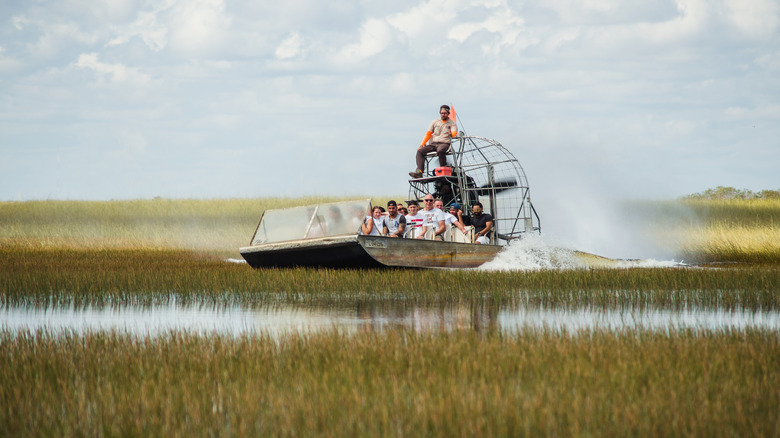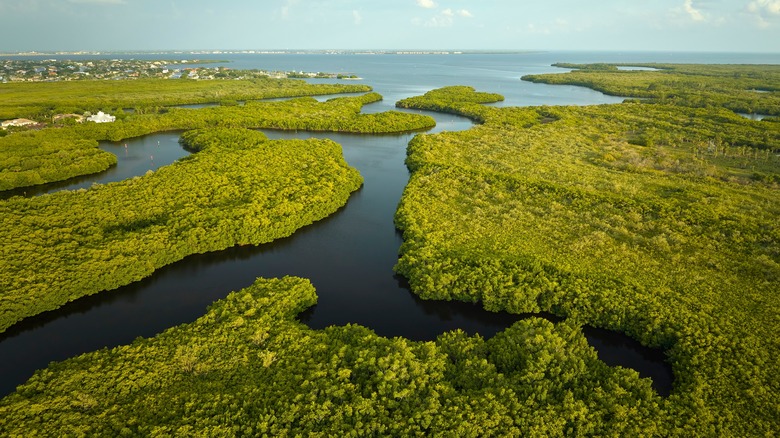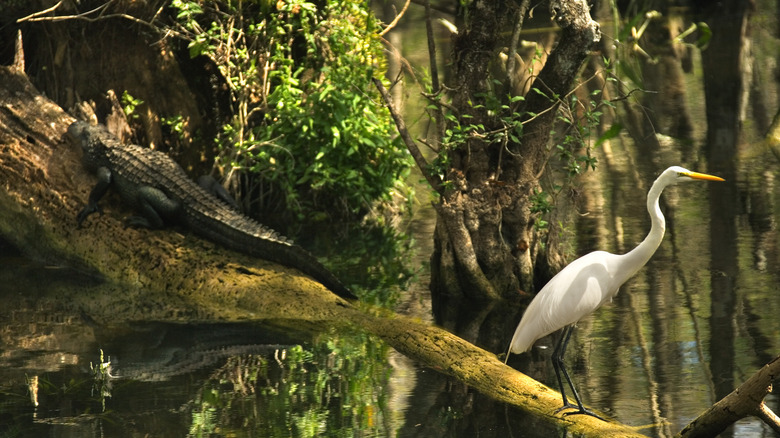Consider Stopping At This Popular Spot For A Look At Florida's Wildlife
Despite being small compared to states like California and Colorado, all regions of Florida have popular tourist destinations from Pensacola to Orlando to Key West. Florida has an extensive history dating back to Spanish colonialism and world-famous theme parks like Disney World and Universal Studios Florida. Given that Florida has the second longest coastline out of the 50 states, wildlife is also a major draw for tourism. Though over 800 miles of the state's coastline consists of fine sand beaches with snorkeling and dolphin excursions, a popular spot for wildlife is less beachy and more swampy. At the southern tip of Florida is the Everglades. These wetlands cover over 1,000 miles west of Miami and consist of sawgrass marshlands, mangrove swamps, and iconic animals like alligators.
The Florida Everglades is the largest of the state's 11 national parks and is also the largest subtropical ecosystem in the United States. These wetlands nearly encompass the entire southern tip of the state. Despite sounding like a remote wilderness, the Everglades' three entrances are easily accessible by car near visitor centers called Shark Valley, Gulf Coast, and Ernest F. Coe.
Visiting the Florida Everglades requires some planning
A visit to the Florida Everglades takes a bit of planning due to its weather. The wet season runs from May to November. Water levels rise during these months, making wildlife less concentrated in specific areas. There are also fewer guided tours during the wet season. The best time to visit the Everglades is during the winter and early spring months. The National Park Service (NPS) and others offer tours by boat, canoe, kayak, and tram. The NPS also works with airboat tour businesses headquartered conveniently near Miami.
Why visit the Everglades National Park? The land became a national park in 1947 and for good reason. These wetlands are home to American alligators, crocodiles, Florida panthers (similar to pumas), West Indian manatees, bald eagles, tree frogs, and many more types of floral and fauna. Some animal species located here are not found anywhere else on the planet. Wetlands are also unique ecosystems that most people rarely encounter, as they are difficult for humans to inhabit.
The Florida Everglades is a vital ecosystem
While visiting the Everglades, it is important to remember that its ecosystem is vital for so many diverse animals and plants. Wetlands are critical for humans as well. According to Washington's Department of Ecology, wetlands can filter polluted water and hold in carbon dioxide, a gas that contributes to climate change. However, the world's wetlands are disappearing faster than forests, per the International Fund for Agricultural Development. The Florida Museum states that efforts to drain the Everglades to make way for urban and agricultural development have caused the Everglades to shrink in size by half.
Aiding in conservation efforts for the Everglades means keeping cities away from the wetlands and cracking down on deforestation. These are obviously big-picture issues, but there are things that tourists can do to help. The big thing to remember is to keep your distance from wildlife, especially because dozens of endangered species live there. The U.S. National Parks Service requires visitors to do so. Cut down on pollution by walking or using public transportation while in southern Florida and recycle. As the saying goes: Take only pictures. Leave only footprints.


